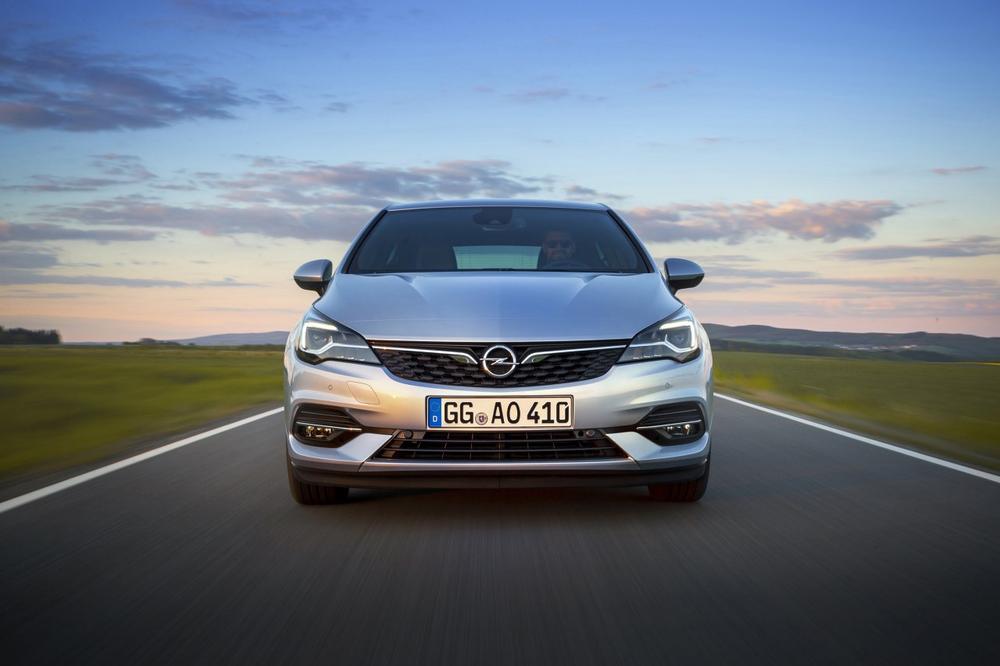- Almost infinite: variety of gear ratios optimises efficiency at all engine speeds
- High comfort: Astra’s stepless transmission delivers imperceptible gear shifts
- Perfect match: optimum balance of refinement and responsiveness
- Up to 21 per cent lower CO2: most efficient Opel Astra of all time
With the launch of the new Astra, Opel took the car industry by surprise by introducing a state-of-the-art stepless transmission on the Astra hatchback and estate. The typical smooth power delivery and high efficiency of the stepless transmission is a perfect match for the new generation of the award-winning Opel Astra (European Car Of The Year 2016). In combination with the 107kW (145hp) 1.4-litre, Direct Injection Turbo petrol engine (NEDC fuel consumption1: 6.3 l/100km urban, 4.3-4.2 l/100km extra-urban, 5.1-5.0 l/100km and 116-114 g/km CO2 combined), the stepless transmission (aka continuously variable transmission or CVT) brings a refined, frugal and lively power unit to the brand’s powertrain portfolio. With a completely new generation of engines and transmissions, the Opel Astra sets standards for low emissions, putting it at the top of the compact class. This new Astra is the most efficient ever with up to 21 per cent lower CO2 emissions than the predecessor. Five of the seven powertrain combinations on offer even undercut the magical 100 gram mark for CO2 emissions per kilometre driven (NEDC1).
Smart operating principle: two pulleys and chain belt instead of gears and clutches
Peter Naumann, Global Program Manager and acting Chief Engineer Automatic Transmissions in Rüsselsheim, explains how stepless transmissions work: “The operating principle is smart and simple. In contrast to a traditional torque converter automatic transmission that has planetary gears, clutches and fixed gear ratios, a stepless transmission has two pulleys connected by a chain belt under tension. Between the outsides of the pulleys, there is a conical shaft, which the chain belt sits on. By continuously adapting the space between the pulleys, you get a variable gear ratio, because the change of the contact surface alters the diameter. This is comparable to transmitting torque from small to big gears and vice versa. Finally, one planetary gear set on the input shaft is still required in order to select forward or reverse driving.”
Due to the almost infinite availability of gear ratios, powertrains with a stepless transmission operate at the most efficient point across all engine speed bandwidths. Peter Naumann: “For each operation point, the transmission enables the powertrain to find the optimum balance of fuel efficiency, attenuation of noise and vibrations, and accelerator pedal responsiveness.”
“Cars with low weight and powertrains producing maximum torque of 230-300 Nm are most suitable for stepless transmissions”, says Naumann. “With 236 Nm of torque and a kerb weight of 1,350kg, the new Astra 1.4 is therefore ideal.”
Great idea: Stepless transmissions in automotive development
The idea of a stepless or shiftless transmission is not new. The American engineer Milton Reeves invented a variable speed transmission for saw milling way back in 1879, which he then applied to his first automobile in 1896.
Numerous variations on the stepless-theme followed in the 1920s, on motorcycles as well as automobiles. George Constantinesco, an engineer and inventor from Romania, created one of the most interesting in 1926. The “Constantinesco Car” featured a 5hp engine with an integrated torque converter. According to advertisements, it was the car with “No clutch, no gears, only one control – the accelerator”!
It took until 1958 for the stepless concept to become more widely known. At the Amsterdam Motor Show, DAF presented the 600 small family car with its innovative Variomatic transmission. Designed by Dutchman Hub van Doorne, the Variomatic made the little DAF sedan famous, among other things, for driving backwards as fast as forwards! Thereafter, stepless transmissions appeared on all sorts of machines, from tractors and snowmobiles to motorbikes and all-terrain vehicles, as well as automobiles.
Opel offered its first example in the Vectra C, which made its debut in 2002. However, the career of the “CVTronic” was short-lived, with production at the Szentgotthard factory in Hungary ending in 2005.
Suitable for a variety of vehicles: from small cars and SUVs to vans and hybrids
Today, “stepless” is making a comeback, aided by the increasingly strict global targets for fuel consumption and CO2 emissions. Because stepless transmissions adjust gear ratios continuously, the engine can always run at its most efficient speed, which saves fuel, especially in city driving.
As a result, they are available on a variety of automobiles, such as small cars and limousines, SUVs, minivans and hybrids. However, modern stepless transmissions are notable for more than just their high efficiency. They are also popular with drivers and passengers who appreciate the imperceptible shifting of gears.
Stepless transmissions are already common in Asian markets, where their smooth and quiet performance makes them very popular. The new Astra with 1.4 engine and stepless transmission is perfect for customers looking for a compact hatchback or estate car with an automatic transmission that offers not only lowers noise and vibrations but also moderate fuel consumption and good responsiveness.
[1] Fuel consumption and CO2-emission data given have been determined according to WLTP test procedure methodology, and the relevant values are translated back into NEDC to allow the comparability with other vehicles, according to regulations R (EC) No. 715/2007, R (EU) No. 2017/1153 and R (EU) No. 2017/1151.
Opel Automobile GmbH
Bahnhofsplatz
65423 Rüsselsheim
Telefon: +49 (6142) 7-70
Telefax: +49 (6142) 77-8409
http://de-media.opel.com/de
Group Manager International Product Communications
Telefon: +49 (6142) 69-21574
E-Mail: martin.golka@opel.com
Manager International Product Communications
Telefon: +49 (6142) 69-22084
E-Mail: colin.yong@opel.com
![]()
